Lake Okeechobee rebound
Big O poised for major comeback after era of extremes
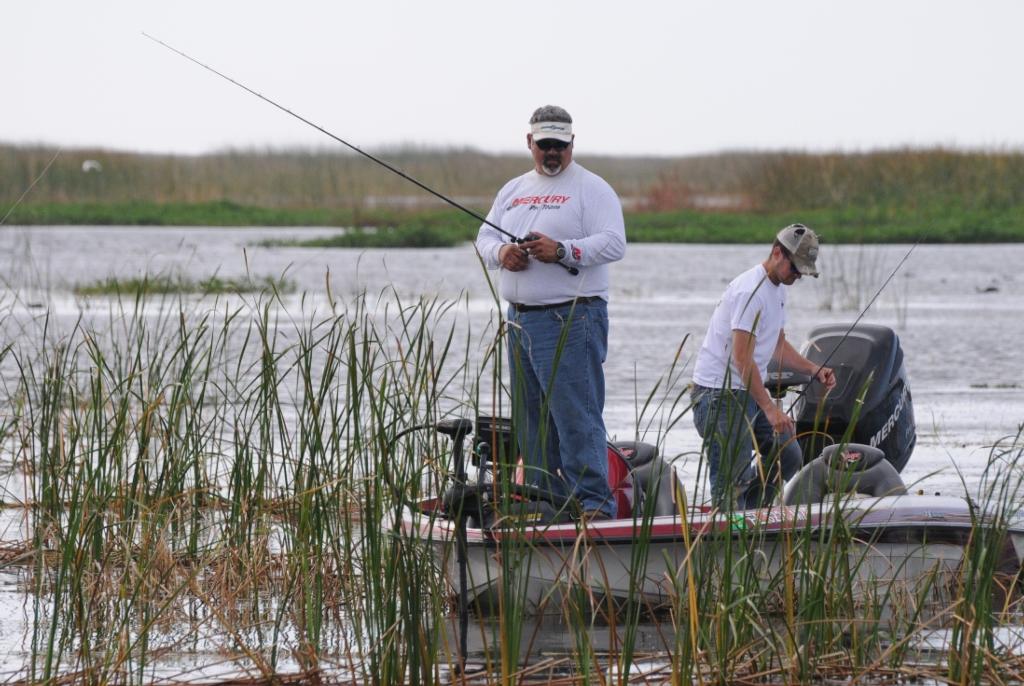
Lake Okeechobee has experienced both ends of the see-saw. But with a renewed sense of balance born of prudent water management and the silver lining of dark ecological clouds, Florida’s largest inland water body is on track to return to its finest form since the heydays of the 1980s.
Proof to this premise occurred Feb. 3-6, when Brandon McMillan thoroughly trounced the record for heaviest total weight in a Walmart FLW Tour event with his monstrous four-day catch of 106 pounds, 10 ounces. Second- and third-place pros Randall Tharp and Chad Prough also broke the 100-pound mark with 102-2 and 100-15, respectively. McMillan, Tharp, Prough and fourth-place pro Terry Scroggins (99-9) now hold the top four spots in FLW Tour history.
Some may downplay such catches as the fortuitous alignment of weather, moon and spawning schedule. But even in the perfect storm of bass fishing, you simply can’t catch fish that aren’t there. In all likelihood, Lake Okeechobee just served up an appetizer that not only indicates a lake clearly rebounding from a tumultuous era, but one that also foretells a forthcoming feast of fishing opportunity.
National Guard pro Scott Martin, whose family has operated a marina on the lake since 1980, has 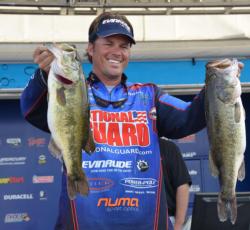 guided on the Big O for several years. He’s caught 500 bass between 9 and 10 pounds there, but today’s Okeechobee has him jacked about boosting his stats.
guided on the Big O for several years. He’s caught 500 bass between 9 and 10 pounds there, but today’s Okeechobee has him jacked about boosting his stats.
“Lake Okeechobee right now is the best bass lake in the country,” Martin said. “It’s off the charts.”
Don Fox, a biological administrator for Florida’s Fish and Wildlife Conservation Commission has been involved in Okeechobee’s management for some 28 years. Throughout his tenure, he’s seen the lake at its best, its worst and now, its most promising.
“I can remember a time back in the mid-80s when if you didn’t catch a 6- to 9-pounder, it was a bad day,” Fox said. “We’re not back to where it was in the 80s, but it won’t be long. The lake is on the verge of being as good as it’s been in the last 30 years. If you can’t go out and catch a limit of fish now, you need to stay at the house.”
Extremes counterbalanced
“Big Water” in the native Seminole tongue, Lake Okeechobee covers approximately 730 square miles in South Florida, with an average depth of nine feet. Anchoring the Kissimmee Chain of Lakes, also including Lake Tohopekaliga (“Toho”), Cypress, Hatchineha and Kissimmee, the Big O ranks as the second largest lake wholly within the continental U.S. (behind Lake Michigan).
With a system of dikes and levees isolating the lake from its historic marsh, the Army Corps of Engineers, along with the Southwest Florida Water Management District (SWIFTMUD) has long managed Okeechobee as a reservoir for the region’s potable water and agricultural irrigation needs. Until the 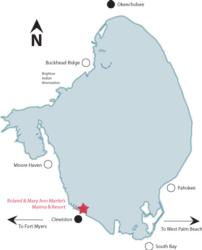 early 2000s, maintaining maximum drainage from the Kissimmee basin was the objective.
early 2000s, maintaining maximum drainage from the Kissimmee basin was the objective.
Then came the hurricanes.
Florida’s no stranger to tropical mayhem, but Hurricanes Frances and Jeanne pummeled the state’s south end in 2004, with Wilma walloping the Okeechobee area a year later. The sudden influx of voluminous water flow, compounded by brutal lashings devastated a lake already bulging with water. Winds and pounding waves ripped up some 50,000 acres of vegetation, stirred up the thick layer of muck and left the lake a turbid ghost town with way too much water for any new plant growth.
“The high water had actually damaged the lake prior to the hurricanes,” Fox said. “The way man was managing the lake as a water supply reservoir and holding water for multiple years in advance is what damaged the lake. The hurricanes of 2004 and 2005 were really the coup d’etat that pushed it to the brink.”
Oddly enough, it took a polar opposite event to resuscitate, and indeed, rejuvenate the Big O. The historic drought of 2007-2008 drained the lake to an all-time low of 8.82 feet above sea level. The lake’s agonizing retreat far from its usual shorelines was difficult to watch, but this time of devastating dryness delivered a miraculous benefit. Suddenly, native plants like eelgrass, peppergrass, bulrush and spikerush began taking root and expanding rapidly across the vastness of an exposed lake bed. Life was returning to Okeechobee and when the water eventually returned, the lake had a whole new set of furnishings.
“When the pendulum swings too far to the left, sometimes it has to swing extremely the other way to get things back into balance again,” Fox explained. “We had a drawing down and an opportunity for the seed banks that had been covered up with mud to grow. A lot of these aquatic plants will not germinate when they’re flooded – they need moist soil, dry ground.”
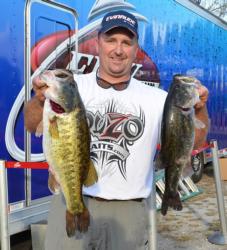 Martin termed the hurricanes and subsequent drought blessings in disguise. The storms essentially scrubbed the lake bottom and exposed much of the hard sand that had been covered for decades. Then, the extreme dry period exposed a lot of that bottom to direct sunlight, which baked away remaining muck and prepared the soil for vegetation growth.
Martin termed the hurricanes and subsequent drought blessings in disguise. The storms essentially scrubbed the lake bottom and exposed much of the hard sand that had been covered for decades. Then, the extreme dry period exposed a lot of that bottom to direct sunlight, which baked away remaining muck and prepared the soil for vegetation growth.
“You really couldn’t have asked for a better scenario because there’s no way to clean this lake manually – it’s too big,” Martin said. “If you have hard sand bottom and vegetation you’re going to have clear water and that’s the recipe for a great spawn in south Florida. The spawns are getting better and better over the past five years and we’re seeing the fruits of that.”
Veteran FLW Tour pro and Okeechobee resident Koby Krieger adds: “Also, when the water’s low, you have vegetation growing farther out in the lake so when the water comes up, there are a thousand more hiding places for fish.”
It’s all about the groceries
In 2008, the FWC replaced Lake Okeechobee’s 13- to 18-inch slot limit with a minimum 18-inch limit for bass. That certainly has helped the lake’s population, but Fox said it all starts with the grocery store. When high water and hurricanes essentially stripped the lake of its native vegetation, habitat for various forage propagation was non-existent. Lacking such, it’s really a stretch to expect much movement in the bass population.
“You get your plant communities, your habitat right and everything follows suit,” Fox said. “When the lake was so bad, there were people who said `Why don’t you stock fish?’ But when you go out on a 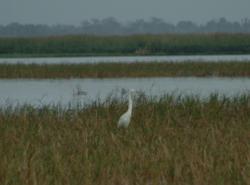 lake and you don’t see a dragonfly; there’s no bugs, no frogs, it doesn’t matter how many fish you stock if you don’t have the groceries. You might as well dump them in the parking lot. You don’t take an acre of asphalt, put a fence around it and put two cows in it.
lake and you don’t see a dragonfly; there’s no bugs, no frogs, it doesn’t matter how many fish you stock if you don’t have the groceries. You might as well dump them in the parking lot. You don’t take an acre of asphalt, put a fence around it and put two cows in it.
“You can never stock enough fish in Okeechobee to make a difference – it’s too large. And if the habitat is not there and the food base is not there, it’s irrelevant anyway.”
Fox said one of the most promising signs of Okeechobee’s improving health has been the return of shad schools. After the hurricanes, the lake looked like chocolate milk. In fact, Fox described it as “a bottle of Yoo-Hoo.” The absence of light penetration prevented not only visible plant growth, but also the microscopic algae and zooplankton needed to feed baitfish.
In years past, juvenile bass would school up and chase shad balls around the lake. The shad’s high caloric value contributed greatly to bass growth, so Fox said he’s encouraged by signs that this forage may be returning to historic abundance.
“This is the first year we’re seeing good evidence of shad reproduction in our sampling,” said Fox. “We’re getting lots of young of the year shad in our sampling. We’re hoping this will be the year we have those big shad pods out there.”
Management matters
In 2008, the Corps implemented new water regulations that called for a lake management range of 12.5-15.5 feet above sea level – a significant change from the longstanding plan of 15.5-17.5. For the 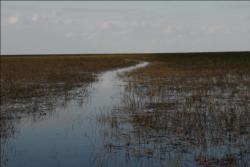 first time in the lake’s history, water managers began looking at what the Big O needed, rather than what was needed from the Big O. In weekly teleconferences, managers discuss current conditions and decide on any actions needed to balance out the system.
first time in the lake’s history, water managers began looking at what the Big O needed, rather than what was needed from the Big O. In weekly teleconferences, managers discuss current conditions and decide on any actions needed to balance out the system.
“It’s what I like to call `adaptive management’,” Fox said. “The ecological processes that are going on in the lake now have a voice in how the lake is managed. Sometimes that means holding more water, sometimes it means less. When we see the water coming up too fast, we can adjust that with some subtle releases instead of letting the damage occur.”
Conversely, Fox notes, when the lake holds steady amid changing water levels, managers may opt for no action. For example, he said that spring 2010 saw the water rise abnormally high, but the vegetation responded well. The water was held in the lake and the spawn proceeded just fine.
“One of the keys to maintaining this fishery is that it’s built back slowly and so far, it’s built back sustainably,” Fox said. “Once you get it, you want to take care of it. You don’t want to have to reset that clock.”
So, how good is this lake? Fox said that, although Okeechobee has yet to reach the levels of big bass bonanzas seen during the 80s, the lake appears poised to turn that corner. With a better management plan in place, native habitat expanding daily and most anglers releasing their big fish, the scene is set for an amazing comeback.
How soon? Fox has high hopes for a 2012 that delivers the potential for new tournament records.
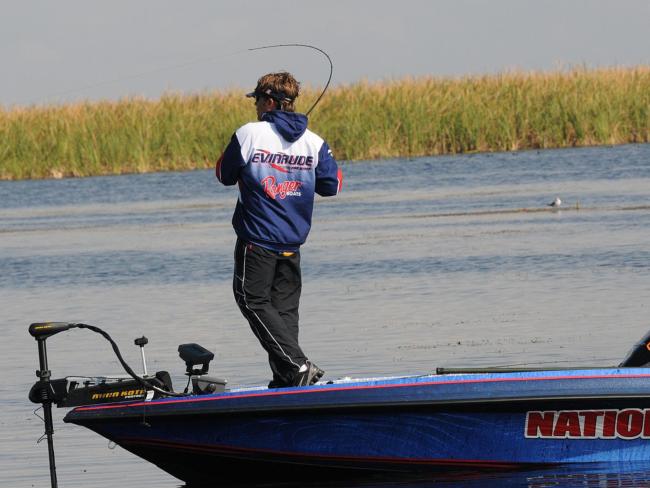
“My worst fear was that we were going to get hit by a storm (in 2010) but we didn’t. The vegetation communities are back, the center of the lake is starting to clear up, we’re getting the plankton back and we’re seeing the shad. Unless something drastic happens, I think we’re there.
“If you think this year is good, wait `til next year.”
Martin, who recalls prepping many a client’s trophy fish for taxidermy during his youth, said his beloved lake will continue to benefit from its rather remote South Florida location. Moreover, modern conservation ethics will keep more big fish in the ecosystem.
“The wonderful thing about Lake Okeechobee is that we don’t have any big major metropolitan area around the lake,” Martin said. “Even though we do have a lot of people fishing, it doesn’t get as much pressure. There are so many thousands of acres where those fish can get back and spawn unmolested. Plus, everybody is catch and release now. That’s what hurt us back in the 80s – people keeping big fish.
“I think as long as we don’t get a major hurricane, and the lake level stays around 12 1/2 to 14 1/2 feet, the fishing is going to be incredible. The old girl is back!”